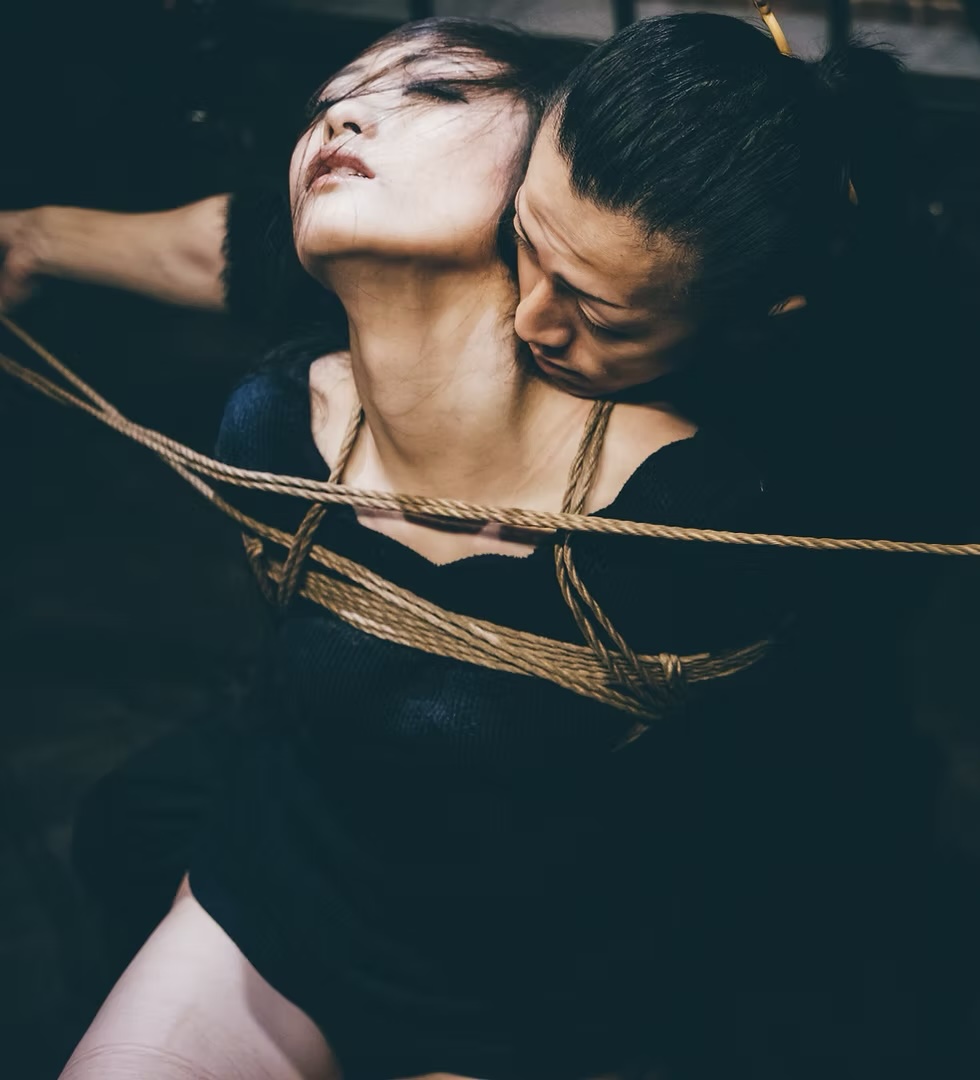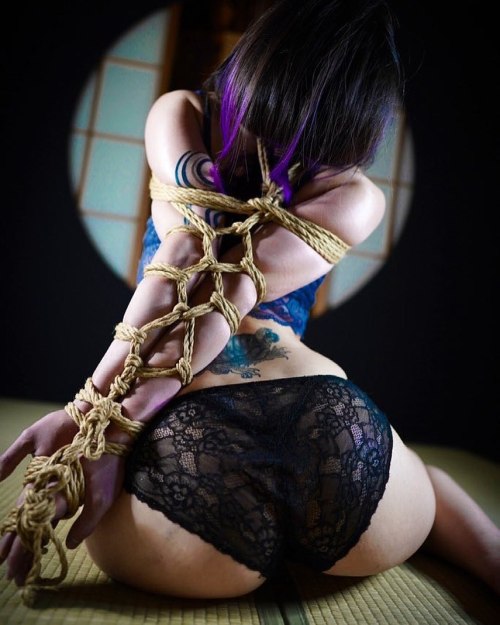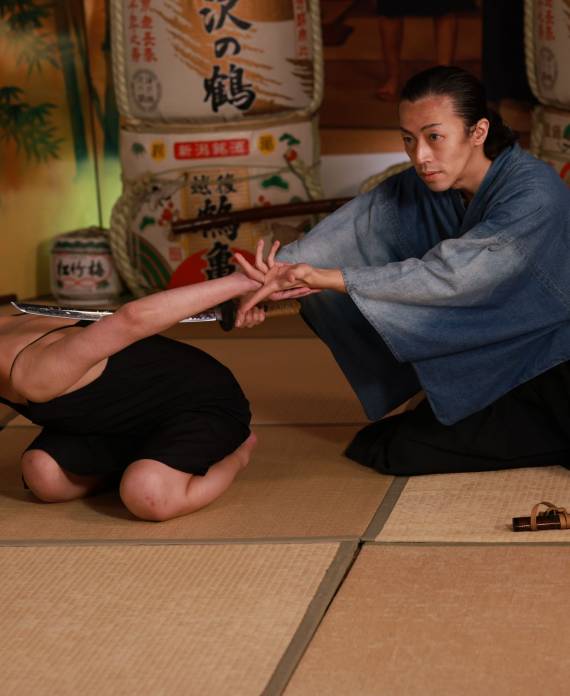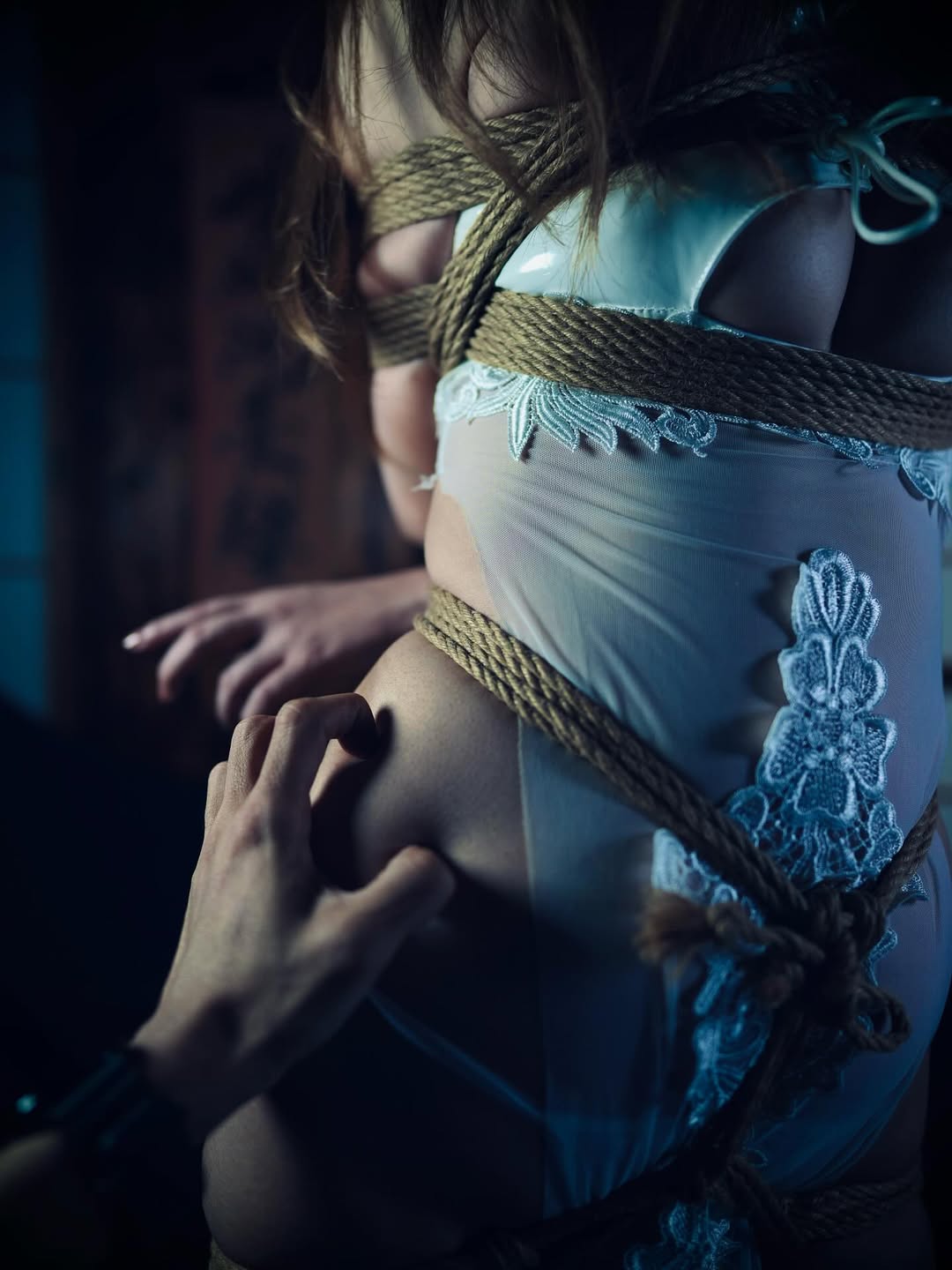Yagami Style
Yagami Ren approaches rope bondage as an art shaped by different styles and personalities. Over time, he has gathered his own ideas and experiences, developing a direction he calls the “Yagami Style.” While shibari was historically rooted in the martial arts, or budo, he draws from this tradition and blends it with modern influences. Every style reflects the unique character of its creator—a personal melody built upon an existing foundation. The Yagami Style is therefore his own interpretation and presentation of shibari.
His focus lies on the question of how people can be efficiently captured, immobilized, and maneuvered. Rope is the tool, but the starting point is always the human being: How can they be controlled, how does that feel? From the martial arts he brings concepts such as maai (distance, timing) and kyuusho (vital points). The central challenge for him is transforming these principles into erotic interaction, leading toward sexual fulfillment.
The Yagami Style rests on three pillars:
Nawasuji (the techniques of tying),
Taijutsu (the use of the body), and Kyushougaku (theory and methodology). These elements do not stand alone but form an inseparable whole. It is not based on feeling alone—deep study and understanding of theory and technique are essential in order to tie with both freedom and effectiveness.



Nawasuji 縄筋
Nawasuji refers to the way rope is used in tying – the technique, the intention, and the expression revealed through the rope. It is divided into two styles: shoden and toginawa. Shoden stands for strictness and determination. Here the tying is tight, precise, and carried out with intensity, the rope carrying firmness and clear resolve. Toginawa, on the other hand, embodies softness and gentleness. It is fluid, tender, and giving, leaving space for calmness and surrender. Only when these two poles meet does true nawasuji emerge – an expression shaped by the balance of hardness and softness, revealing the essence of rope.
Taijutsu 體術
refers to the way the body—or rather both bodies, that of the ukete and the shibarite—are used. This element is rooted in martial arts. For many people it is difficult to grasp. Students often wonder why they are asked to practice martial arts in order to learn shibari, yet without those foundations it is hard to truly understand taijutsu.
One example of taijutsu is sankaku gihō, the triangular form (三角). There are many variations of the triangle, and the human body itself contains these structures. It is important to understand the angles. By literally observing the body of the tied person, one can always find a way to apply control through the geometry of the triangle.
Another principle is enten gihō, the circular form. It represents the force that sets everything in motion—the circle, the sphere, the ball. Through its rotation, communication is harmonized. If we take a triangle and rotate it around an angle or a vertex, we arrive at a sphere.
Finally, fuchin gihō deals with floating and sinking. It makes use of the body’s automatic responses and reflexes, of shifting tensions and loads, and of the right moment and ma-ai (spatial distance and timing).
These are some of the most common techniques. More details follow later, but they already reveal how taijutsu draws from the geometry of movement, balance, and interaction between two bodies.




Kyushougaku
Kyūsho-gaku is the theory and methodology of how things are applied. It is fundamental for understanding both nawasuji and taijutsu. Kyūsho-gaku creates the bridge between them: if only the rope is used effectively, or only the body, the connection between the two people remains incomplete.
At the foundation of Yagami Style stands the Kihon Sangen Shoku (基本三原則), the three essential principles. They provide the stance and orientation from which all practice emerges.
Building on that are the Kisohachiron (基礎八論), the eight basic theories and methods. Typical examples include kassaatsuron (the “murder theory”), shiseiron (theory of posture), kyojitsuron (theory of falsehoods), as well as sankakuron and enteron. There are many more. The deeper one studies these theories, the clearer the understanding of both shibari and taijutsu becomes.
Yagami Style Levels
Shoden – Basic level
In this context, shoden refers to the foundational level, not to be confused with the shoden of tying style. There are five forms of shoden and five forms of toginawa. Beginners study these first ten forms, or katas, which serve as the basic shapes—and even with them, there is already plenty of room for exploration and enjoyment. Added to this are five ways of moving the body.
Any form of shoden can be combined with any form of toginawa and any form of taijutsu. This results in 5 × 5 × 5 = 125 possible combinations. A defining feature of Yagami Style is the creation of new applications by combining these basic elements.
The learning path then continues beyond the foundation:
Chūden – intermediate level
Kōden – advanced level
Okuden – higher, or inner level
